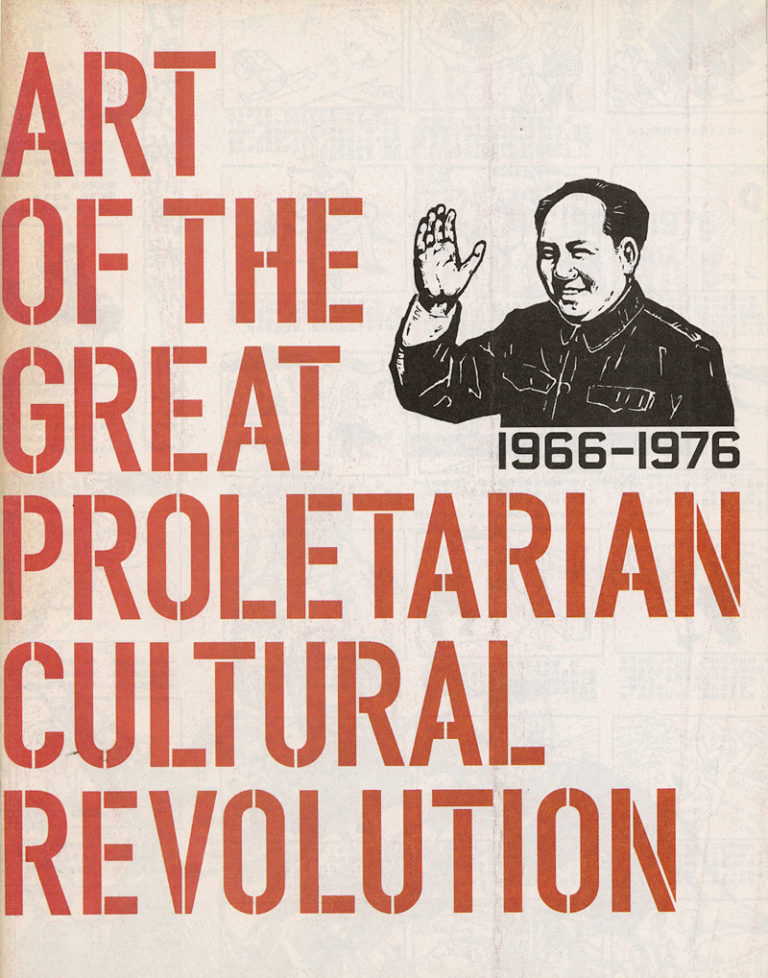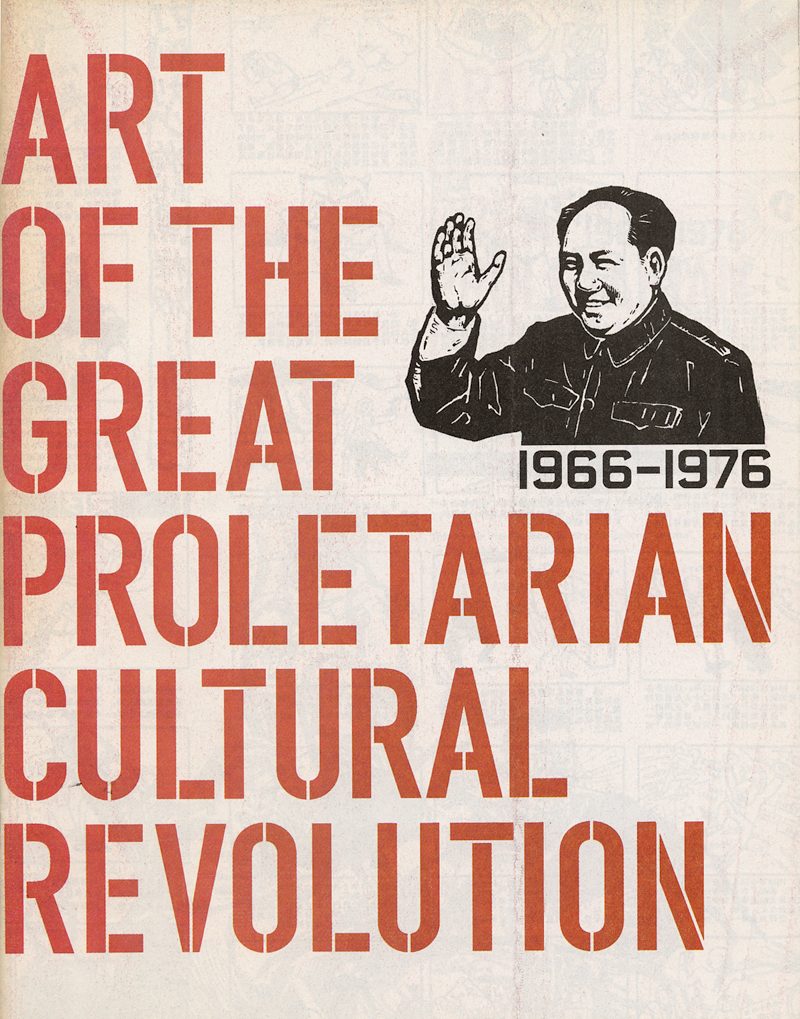22 March 2002 – 25 August 2002
Morris and Helen Belkin Art Gallery
The Art of the Great Proletarian Cultural Revolution
-
Scott Watson, Curator
CuratorScott Watson (Canadian, b. 1950) is Director of the Morris and Helen Belkin Art Gallery and Professor in the Department of Art History, Visual Art and Theory at the University of British Columbia. A curator whose career has spanned more than thirty-five years, Watson is internationally recognized for his research and work in curatorial and exhibition studies, contemporary art and issues, and art theory and criticism. His distinctions include the Hnatyshyn Foundation Award for Curatorial Excellence in Contemporary Art (2010); the Alvin Balkind Award for Creative Curatorship in BC Arts (2008) and the UBC Dorothy Somerset Award for Performance Development in the Visual and Performing Arts (2005). Watson has published extensively in the areas of contemporary Canadian and international art. His 1990 monograph on Jack Shadbolt earned the Hubert Evans Non-Fiction Prize in 1991. Recent publications include Letters: Michael Morris and Concrete Poetry (2015); Thrown: British Columbia’s Apprentices of Bernard Leach and their Contemporaries (2011), a finalist for the 2012 Roderick Haig-Brown Regional Prize; “Race, Wilderness, Territory and the Origins of the Modern Canadian Landscape” and “Disfigured Nature” (in Beyond Wilderness, McGill University Press, 2007); and “Transmission Difficulties: Vancouver Painting in the 1960s” (in Paint, Vancouver Art Gallery, 2006). (2018)
Read More
-
Yan Shan Chen, Curator
Curator -
Zheng Sheng Tian, Curator
Curator
The “Great Proletarian Cultural Revolution” is usually seen as abhorrent by the West. This politically motivated campaign would profoundly affect all aspects of Chinese life and society, not just for the ten years from 1966 to 1976, but up to the present as the formative life experience for a generation of Chinese writers and artists. Thus far, Western scholarship on this crucial period has focused more on the political than the cultural. Although the period is officially off limits in China and investigation is discouraged, in recent years there has been an immense interest in researching the period. Films of the five model operas and two ballets, produced collaboratively under the aegis of Jiang Qing, Mao’s wife, are today in wide circulation. A section of the Beijing flea market is devoted to Cultural Revolution material. This material is actively collected, auctioned and restored. However, continued political sensitivity has inhibited serious critical discussion of its cultural productions.
The situation is now beginning to change, with more Western scholars taking an interest in 20th century Chinese art and culture, including popular culture and more cosmopolitan Chinese artists, art critics and historians able to use new methodologies to explore the art and literature of the Cultural Revolution. Contemporary Chinese scholars, many of the generation who grew up during the Cultural Revolution, see the recovery of historical memory as an urgent and necessary task. The connoisseurship that is developing around a growing art market is producing detailed knowledge of the objects and images of the time. The arts of this period are slowly being rewoven into the larger picture of the history of art in China.
Co-curated by Scott Watson, Director of the Belkin Gallery; Zheng Sheng Tian, Independent Scholar and Artist, Delta, BC; and Yan Shan Chen, Senior Researcher of Art at the Shenzhen Art Academy, Shenzhen, People’s Republic of China, this exhibition features the propaganda arts and rare materials such as oil paintings, wood block prints, silkscreens, drawings, mass-produced posters and newspaper cartoons. A life-sized reproduction of the destroyed sculpture, Red Guard Praise (1967) is being re-created for the exhibition. Borrowed from private collections in China, many of the works have never been exhibited outside of the country.
The exhibition is launched by a two-day conference on March 22 – 23, 2002 that will bring together some 30 scholars, artists and art critics from around the world including Canada, China, New Zealand, Sweden and the United States to discuss issues around the cultural production of Chinese literature, opera, theatre, painting and sculpture during this historical period.
This project is made possible by the support of the: Audain Foundation; Canada Council for the Arts; Charles H. Scott Gallery; Emily Carr Institute of Art + Design; Hampton Fund Research Grant in the Humanities and Social Sciences through the University of British Columbia; Social Sciences and Humanities Research Council of Canada through the University of Victoria. The conference is organized by the Morris and Helen Belkin Art Gallery in collaboration with the UBC Department of Asian Studies; the Department of History, University of Victoria; and the Department of Pacific and Asian Studies, University of Victoria.

Yi Zhong, Chairman Mao’s Red Guard: Learn from Comrade Jin Xunhua, a revolutionary youth model. Poster, 116.5 x 87.5 cm. Published by The Shanghai People’s Fine Art Publishing House, December 1969.

Guan Qiming, Heighten our Vigilance, Defend the Motherland. Poster, 84.5 x 61.0 cm. Published by The People’s Fine Art Publishing House,##September 1969. Photo: Howard Ursuliak.
The original oil painting was exhibited at the “Exhibition of Self-Defense Battle of Zhen Bao Island” in 1969. Jiang Qin saw the painting and suggested that the colour of sky be changed from pink to blue.

Guan Qiming, Heighten our Vigilance, Defend the Motherland. Poster, 84.5 x 61.0 cm. Published by the PLA Pictorial Press, August 1970. Photo: Howard Ursuliak
This painting was created after Jiang Qing criticized the pink sky and demanded that it be changed to blue. This is the revised version.

Art of the Great Proletarian Cultural Revolution 1966—1976. Exhibition catalogue.
-
Scott Watson, Curator
CuratorScott Watson (Canadian, b. 1950) is Director of the Morris and Helen Belkin Art Gallery and Professor in the Department of Art History, Visual Art and Theory at the University of British Columbia. A curator whose career has spanned more than thirty-five years, Watson is internationally recognized for his research and work in curatorial and exhibition studies, contemporary art and issues, and art theory and criticism. His distinctions include the Hnatyshyn Foundation Award for Curatorial Excellence in Contemporary Art (2010); the Alvin Balkind Award for Creative Curatorship in BC Arts (2008) and the UBC Dorothy Somerset Award for Performance Development in the Visual and Performing Arts (2005). Watson has published extensively in the areas of contemporary Canadian and international art. His 1990 monograph on Jack Shadbolt earned the Hubert Evans Non-Fiction Prize in 1991. Recent publications include Letters: Michael Morris and Concrete Poetry (2015); Thrown: British Columbia’s Apprentices of Bernard Leach and their Contemporaries (2011), a finalist for the 2012 Roderick Haig-Brown Regional Prize; “Race, Wilderness, Territory and the Origins of the Modern Canadian Landscape” and “Disfigured Nature” (in Beyond Wilderness, McGill University Press, 2007); and “Transmission Difficulties: Vancouver Painting in the 1960s” (in Paint, Vancouver Art Gallery, 2006). (2018)
Read More
-
Yan Shan Chen, Curator
Curator -
Zheng Sheng Tian, Curator
Curator
Funders
-
Audain Foundation
-
Canada Council for the Arts
-
Charles H. Scott Gallery
-
Emily Carr Institute of Art + Design
-
Hampton Fund Research Grant in the Humanities and Social Sciences through the University of British Columbia
-
Social Sciences and Humanities Research Council of Canada through the University of Victoria
Related
-
Publication
2002
The Art of the Great Proletarian Cultural Revolution: 1966-1976
 Exhibition catalogue from The Art of the Great Proletarian Cultural Revolution at the Belkin (23 March—25 August 2002) with texts by Scott Watson, Shengtian Zheng and Paloma Campbell. The exhibition features propaganda arts and rare materials such as oil paintings, wood block prints, silkscreens, drawings, mass-produced posters and newspaper cartoons. [more information and purchase]
Exhibition catalogue from The Art of the Great Proletarian Cultural Revolution at the Belkin (23 March—25 August 2002) with texts by Scott Watson, Shengtian Zheng and Paloma Campbell. The exhibition features propaganda arts and rare materials such as oil paintings, wood block prints, silkscreens, drawings, mass-produced posters and newspaper cartoons. [more information and purchase]